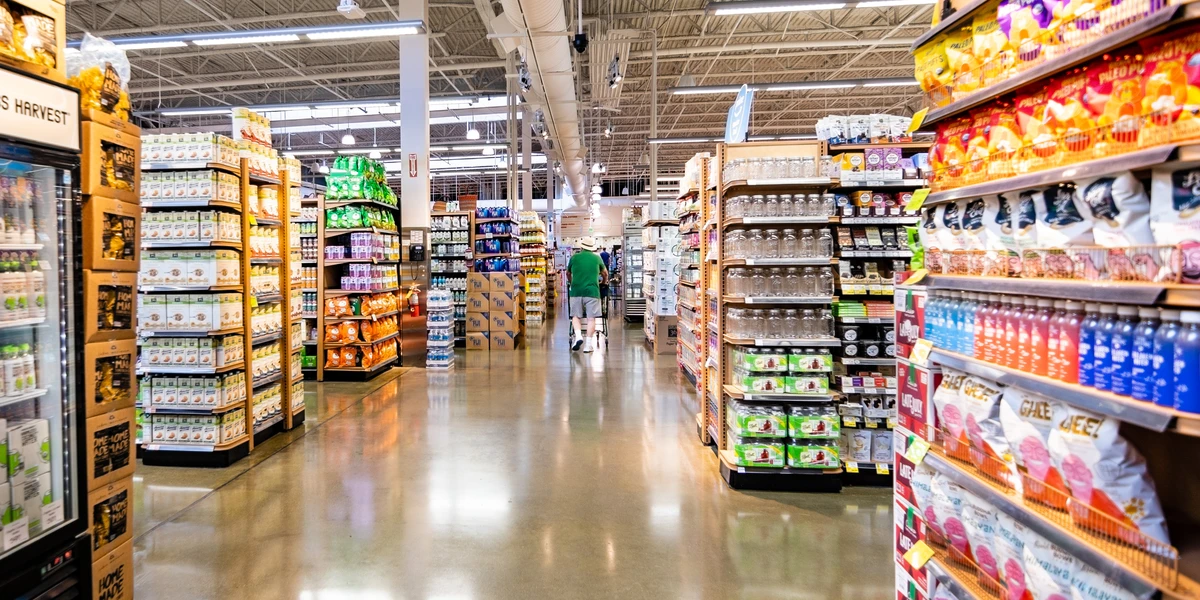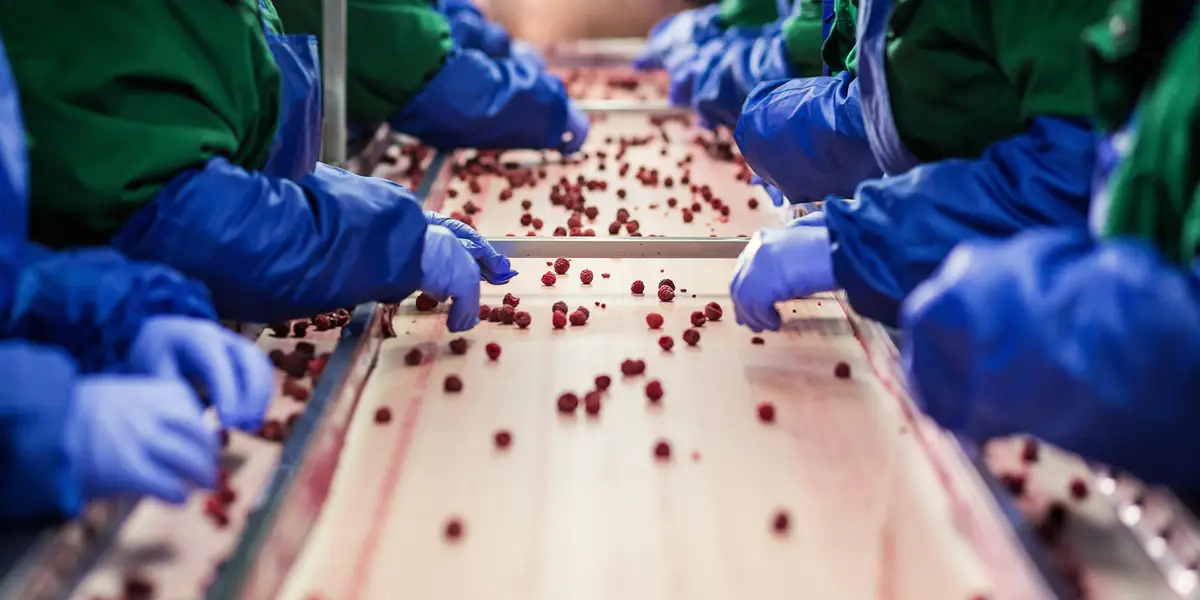“Next window, please.” For most people, that’s an invitation to inch forward a bit, collect a snack-filled sack dangling from a drive-through window, and munch on a few crispy, salt-flecked fries as they speed off on their merry way.
But the hourly workers inside any given fast-food restaurant are probably more interested in windows of opportunity leading to fatter paychecks or long-term job security as their industry samples technological breakthroughs.
Relying on Fast-Food Wages
The halcyon days of quick-service spots staffed by freewheeling teens are over.
While high schoolers interested in earning a few extra bucks are certainly part of the 3.5 million fast-food employees the Bureau of Labor Statistics says are keeping America fed, they’re also surrounded by coworkers like single moms struggling to put food on their own tables, second job-holders hustling to make ends meet, retirees fighting for financial independence, and many more.
Job hub Zippia estimates that more than half (51%) of current fast-food workers are post-college age (20-30 years old), while one in 10 is creeping towards middle age (30-40). Add in census data-related findings showing that a quarter of fast-food workers are parents of at least one child, and it becomes clear that while maybe they weren’t originally created to be forever jobs, they are some people’s livelihoods.
 A recent Economic Roundtable report shows that 11% of fast-wood workers in California are unhoused, a situation that could be rectified with more stable employment and liveable wages.
A recent Economic Roundtable report shows that 11% of fast-wood workers in California are unhoused, a situation that could be rectified with more stable employment and liveable wages.
Nationally, the federal minimum wage has largely remained stagnant over the past decade, creating the dichotomy where adults need fast food jobs but aren’t paid enough to take care of their families.
The federal-government-mandated pay rate has remained at $7.25 per hour since the end of the George W. Bush administration. More than two dozen states have enacted individual hikes, offering an extra buck-fifty ($8.75, West Virginia) to more than doubling the federal standard ($15.74, Washington). New York is set to raise its minimum wage to $17 an hour in New York City and $16 an hour elsewhere before tying future increases to the rate of inflation.
Meanwhile, California’s pending FAST Recovery Act — a progressive to-do list pushing for pay up to $22 an hour, broader healthcare benefits, and the creation of a 10-person council tasked with improving working conditions at fast-food chains with more than 100 locations nationwide — has reportedly sparked copycat legislation in states including Minnesota, Illinois, Massachusetts, and New York.
While many fast-food joints reflexively threaten automation when the issue of better wages and benefits is brought up, there are some who recognize that rewarding employees for a hard day's work with liveable compensation is good for business and the bottom line. &pizza founder Michael Lastoria is one of them. “We built a company for our workforce, not despite them,” Lastoria wrote of the rising pay rates (averaging about $16 an hour, but aiming for $20), guaranteed paid sick leave, and employer-sponsored healthcare coverage baked into his burgeoning brand.
Lastoria has also sweetened the pot with custom tweaks like paid time off to vote or engage in political activism, which he says “allows our people to be seen.”
Automation Nation
But automation where computers and bots take the place of humans is not an idle threat. Many fast food chains already allow people to order using a mobile app or in-store touchscreens. Wendy’s recently announced it would be working with Google to develop an AI chatbot that will take orders at drive-through windows. And Chipotle, White Castle, and Wing Zone are some of the early adopters to date, according to a CNBC report, on grab-and-go standbys experimenting with robotic kitchens. Restaurant consultants tracking the rollout of automatic burger flippers and self-operating pizza ovens estimate that automation could save fast-food operators more than $12 billion a year in salary costs.
It’s projected that by 2030, robots could replace up to 800 million jobs worldwide, tech outlet The Verge warned in late 2017. Their reporting, based on an analysis of global automation trends, calculated that up to a third of the U.S. workforce – between 39 and 73 million jobs – could be affected by this paradigm shift.
And while change can be frightening, particularly when involving the most vulnerable people in the workforce, economic and industry shifts often lead to more innovation and new career opportunities.
Threatening to replace cashiers with touchscreen ordering stations or swapping out a friendly face at the drive-through for a conveyor belt that rolls food at customers isn’t forward-looking leadership.
In fact, that type of knee-jerk reaction could backfire doubly. First, by alienating regular customers — including the people working those jobs right now — who prefer their happy meals with a side of human interaction. And also, by making it so displaced employees can’t afford to eat there anymore.
While robots can increasingly handle much of what’s asked of fast-food workers, what they never do is splurge on triple cheeseburgers, Nashville-hot fried chicken sandwiches, or candy-studded milkshakes.
One way to marry new and old is to slowly integrate automation but also retrain existing personnel to troubleshoot machines that break down. Or reassign them to take care of dissatisfied customers who want to vent about how the robot waiter/cook/expeditor botched their order.
Automation "doesn't have to be a replacement" for human workers, Dunkin' Brands CEO Nigel Travis told Insider. "It can be a natural support for running the business."
A Much Louder Voice
The momentous combination of legislation directly targeting fast-food giants with union labor-supported efforts like California's FAST Recovery Act, a working-class cost-of-living crisis, and a new wave of efficiency-based technology has placed the entire fast-food industry at a tipping point. The time is now – forward-looking leaders must prepare for the future of fast food.
Many industry leaders have already begun making strides. Fast-food pioneers like &pizza, Shake Shack, and In-N-Out Burger fared far better than others during the pandemic (less turnover, steadier business) because they were already paying above minimum wage and providing essential benefits.
Rather than starting with “no” and reflexively clashing with workers, fast-food operators could tap into what has worked in other industries: better training and benefits. Providing liveable wages and chances for advancement in an industry that is no longer dominated by high schoolers looking to earn a few bucks after school at their first job builds loyalty and reduces turnover. Companies can do a better job listening to their employees and giving them a seat at the table when dealing with cultural and economic challenges that arise.
There is no question the fast food industry is at a crossroads. But it’s equally true that without a real conversation, it will be the most vulnerable who stand to be hurt the most.
Ken Lovett leads Ichor’s Public Sector Practice and is a long-time award-winning journalist and communications expert with deep knowledge of policy, politics, and media strategy. He is based in the New York City office.
Seattle-based engagement specialist Bliss Collins supports the Community Engagement Team at Ichor Strategies and has vast experience in building community partnerships and coalitions with community leaders, nonprofit organizations, and private entities.




